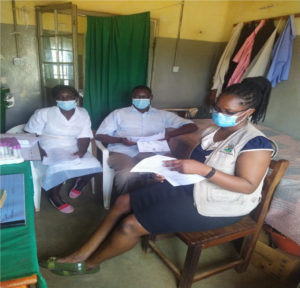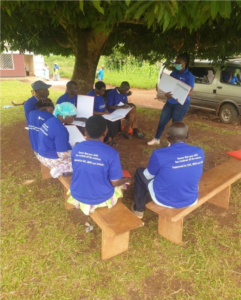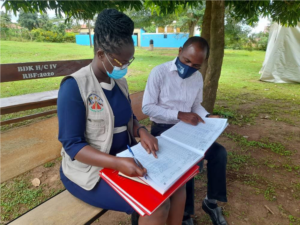 |
Alice AsioBNS (CIU), MPH (CIU) Host Site: National Malaria Control Division (NMCD), Ministry of HealthHost Mentor:
|
|||||
ABOUT THE FELLOWAlice Asio is a field epidemiologist with a master’s degree in public health and a bachelor’s of nursing both from Clarke International University. She has special interest in the implementation of the One Health approach to public health. During her fellowship, she was hosted at the Ministry of Health’s National Malaria Control Division (NMCD). While here, she contributed to the drafting of a number of national documents, such as the National Action Plan for Health Security, the Malaria Response Plan, the Malaria Vaccine Strategic Plan, the Malaria Issue Paper, and One Health Strategic Documents (NAPHS). Through in-service training, Alice gained valuable skills in leadership, outbreak investigation and response, data analysis, interpretation, and utilization, grant writing and surveillance system setup, monitoring and evaluation. She has led three outbreaks and participated in four others. During the Ebola outbreak, she oversaw case investigations and contact tracing. Alice has won two grants from TEPHINET to conduct studies. Achievements at the Host Site
Fellowship program specific achievements
Conducted an HIV study on Utilization of the Orphan Vulnerable Children Screening and Enrollment Indicators in identifying children and adolescents living with HIV (C/ALHIV). Conference presentations
Written publications
Grants won from TEPHINET
Summary of Epidemiological Study:Title: Investigation of Black Water Fever Outbreak among Children in Eastern Uganda, January 2019 – July 2021 Background: Blackwater fever (BWF) is extensive hemolysis that typically occurs after repeated falciparum malaria infections or use of antimalarial drugs. In May 2021, districts in Eastern Uganda reported an increase in suspected BWF affecting mostly children <12 years of age. We investigated to confirm the outbreak, assess scope, and identify factors associated with BWF Methods: We defined a suspected case as onset of dark-coloured urine with at least one of the following: fever >37oC, anorexia, fatigue, abdominal pain, abdominal distention, anemia, jaundice, headaches, or vomiting in a patient attending Mbale, Soroti or Jinja Regional Referral Hospitals (RRHs) of Eastern Uganda during January 2019 to May 2021. We abstracted medical records data for cases identified from January 2019 – May 2021 and conducted an unmatched case-control study to identify risk factors in Soroti and Mbale RRHs, June-July 2021. Controls were randomly-selected pediatric patients admitted in the same ward as a case who had never passed dark-coloured urine. We interviewed caretakers of 87 cases and 87 controls on clinical picture, medical history, and exposures. We randomly selected 20 cases and 20 controls from the case-control study group and collected samples of urine, blood, and stool samples. We conducted ten different tests including pathogen discovery to find-out the causative organism. We calculated attack rates and conducted multivariable logistic regression to identify factors associated with BWF. Results: From the review of records, we identified 4,913 case-patients. Of these, 2,617 (53%) presented with high-grade fever, and 2,295 (47%) with anaemia; two-thirds (65%) were from Soroti RRH. Attack rates were similar in 2019 (AR=2.3/10,000) and 2020 (AR= 2.5/10,000). Males [2019: AR=3.2/10,000, 2020: AR= 3.3/10,000, and 2021(Jan-May): AR=1.5/10,000] were more affected than females in all the years of the study period. Among 87 cases and 87 controls, the mean age was 6.8 years (SD=3.9) for cases and 6.0 years (SD=) for controls. Delaying >24 hours between malaria symptom onset and receiving care increased odds of BWF (aOR=33.22, 95% CI: 4.34 – 254.4), having one or more malaria episodes before the first episode of BWF lowered odds of experiencing BWF (aOR=0.01, 95% CI: 0.007 – 0.11). Having sickle cell anaemia, hepatitis B, or HIV were not associated with BWF. Conclusion: BWF caused substantial morbidity among children in Eastern Uganda during our study period. Case-patients experienced repetitive episodes. Delaying >48 hours between malaria symptom onset and receiving care was associated with BWF. Future studies should focus further on the causative agent(s), triggers of BWF, and expand case capture sites to identify geographic boundaries of this problem in Uganda. Immediate care-seeking should be emphasized for children with a history of BWF. Key lessons learnt during the fellowship
|
||||||
|
|
|

|
|
|
|




